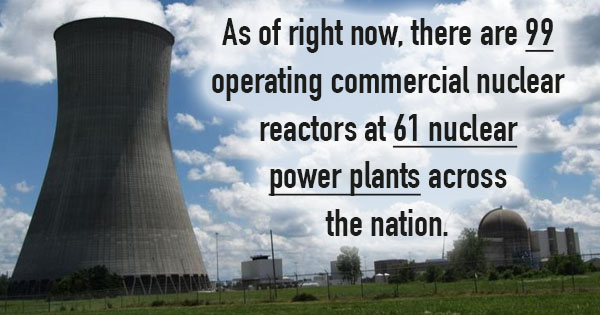Government Needs To Do More To Protect Nuclear Industry From Drones
 Here’s something scary: within a span of two months in 2014, drones flew around France’s nuclear facilities at least 32 times. We still don’t know who was responsible, which is exceptionally worrisome as commercial drones are becoming a fact of life.
Here’s something scary: within a span of two months in 2014, drones flew around France’s nuclear facilities at least 32 times. We still don’t know who was responsible, which is exceptionally worrisome as commercial drones are becoming a fact of life.
It is no secret that technology around us is evolving at a rapid pace. Since commercial drones are becoming commonplace, more needs to be done to protect nuclear facilities from threats.
Typically, drones are often used by utility companies for a variety of tasks such as checking power lines and inspecting storm damage. However, security experts warn that drones could also be used to threaten the security of nuclear power plants. Currently, there are 99 operating commercial nuclear reactors at 61 nuclear power plants across the nation.
Why? The concerns started in 2015 when the Federal Aviation Administration released new rules clearing the way for commercial drones. After feeling threatened, prominent members of the nuclear energy sector grew incredibly nervous as these rules weren’t deemed safe. At the time, David Kline, the director of security with the U.S. Nuclear Institute, called the FAA’s rules “insufficient”.
Kline suggested adding a provision to ban drone operators from flying within a three-mile radius of any nuclear power plant, which would prevent them from accessing confidential, sensitive information.
“Although NEI is not aware of any unauthorized flights of [drones] at or near U.S. commercial nuclear power plants, the present FAA regulatory regime and the Proposed Rule are not sufficient to address such flights,” Kline said.
The good news is that along with the U.S. Department of Transportation, the FAA has recently implemented a new set of rules that will bring clarity to the nuclear industry. The regulations will not allow commercial use of drones at night, flying of drones over people, or flying drones beyond the visual eye of sight.
With the threat of climate change, there is a growing interest in investing in nuclear energy. Nuclear investment has been shown to be a great alternative to fossil fuels, as the growing world population is causing a demand for electricity that cannot be met.
If you are looking for more information concerning nuclear investment and publicly traded nuclear companies, be sure to contact U.S. Nuclear Corp.
____________________________


 Overall, a slim majority of Americans — 51% — favor the use of nuclear energy for domestic electrical use, while 43% oppose it. No doubt this is thanks in part to the many myths floating around about the use of nuclear power. In order to prevent any misconceptions that might be preventing the U.S. from
Overall, a slim majority of Americans — 51% — favor the use of nuclear energy for domestic electrical use, while 43% oppose it. No doubt this is thanks in part to the many myths floating around about the use of nuclear power. In order to prevent any misconceptions that might be preventing the U.S. from  The U.S. Department of Energy’s Loan Programs Office announced in December of 2014 that it opened a $12.6 billion loan guarantee for advanced nuclear technologies. This includes small modular reactors, molten salt reactors, and breeder reactors.
The U.S. Department of Energy’s Loan Programs Office announced in December of 2014 that it opened a $12.6 billion loan guarantee for advanced nuclear technologies. This includes small modular reactors, molten salt reactors, and breeder reactors.